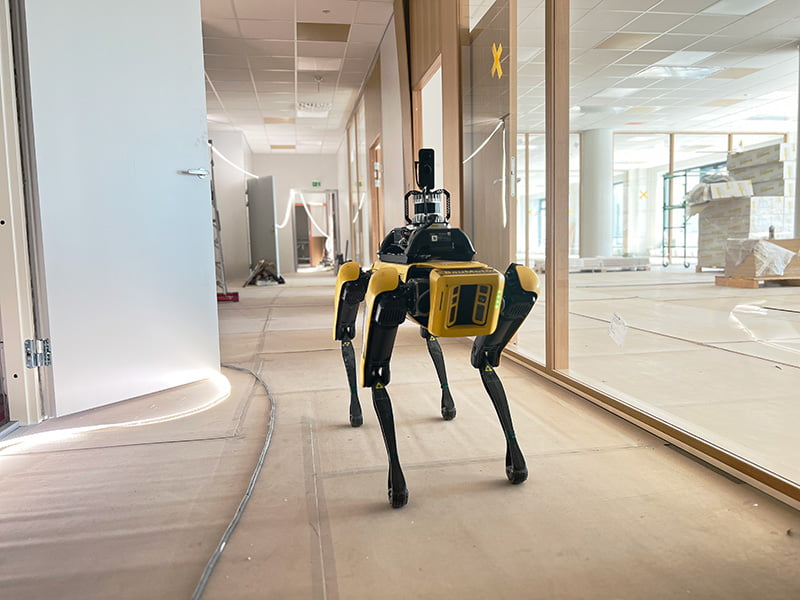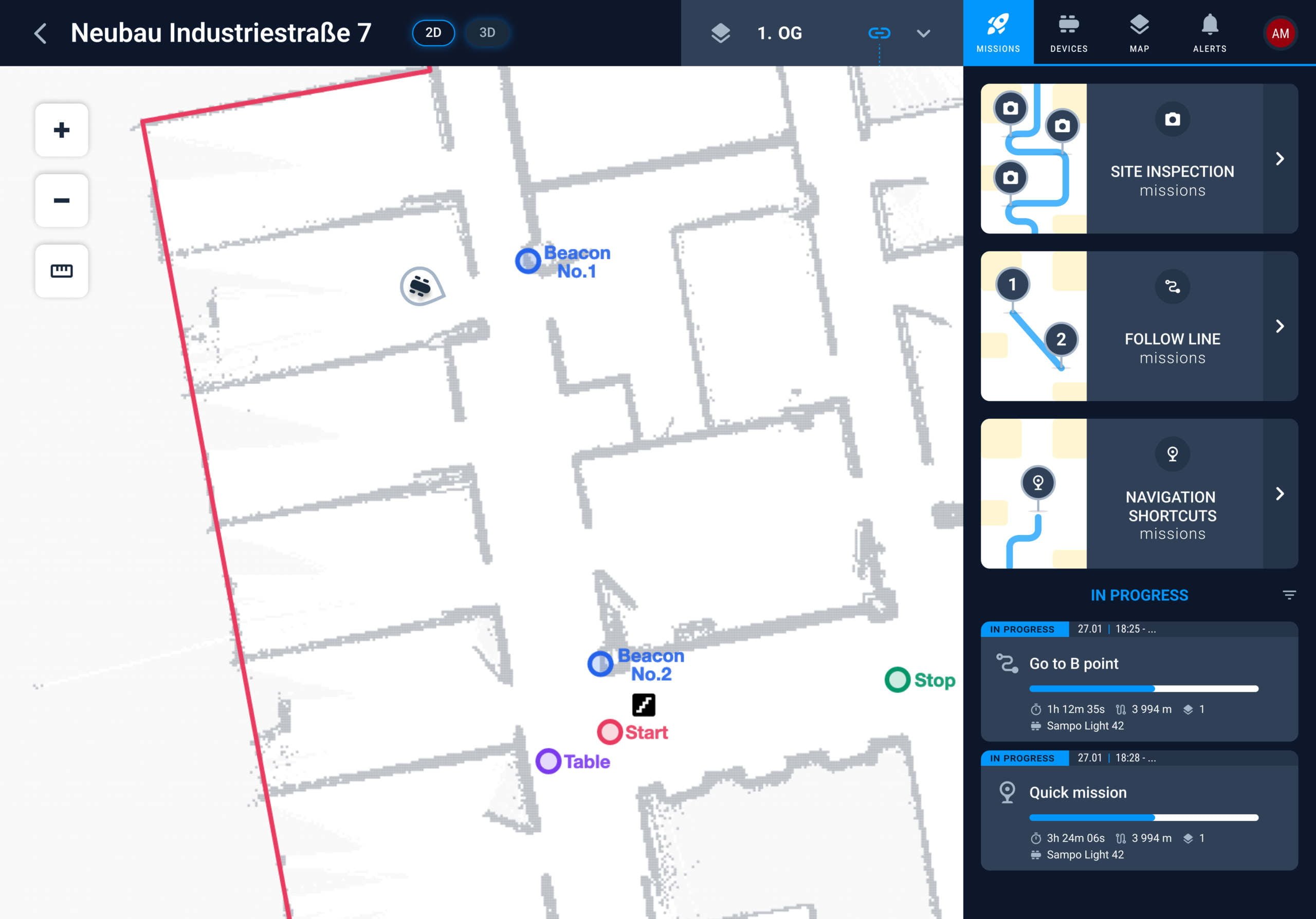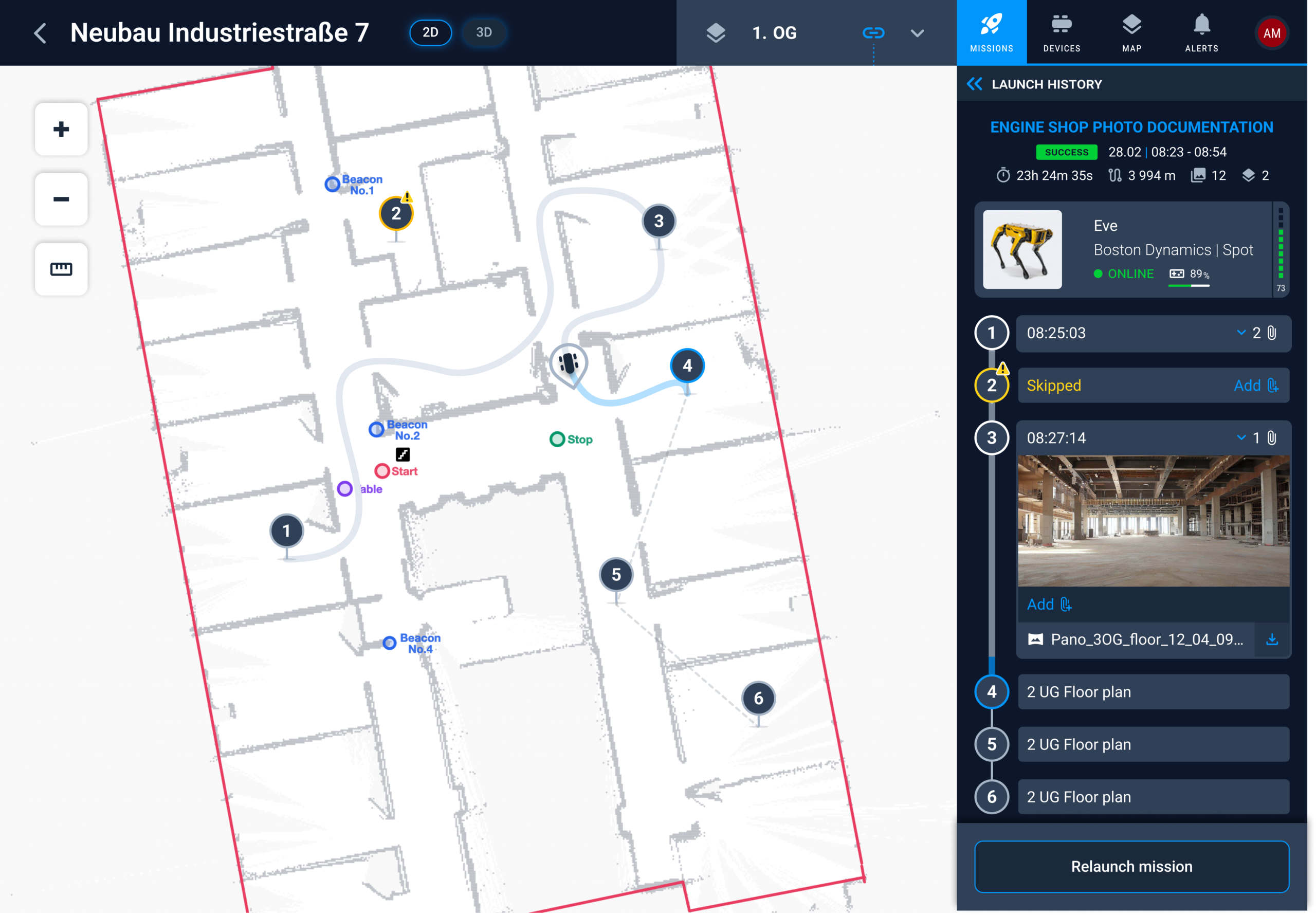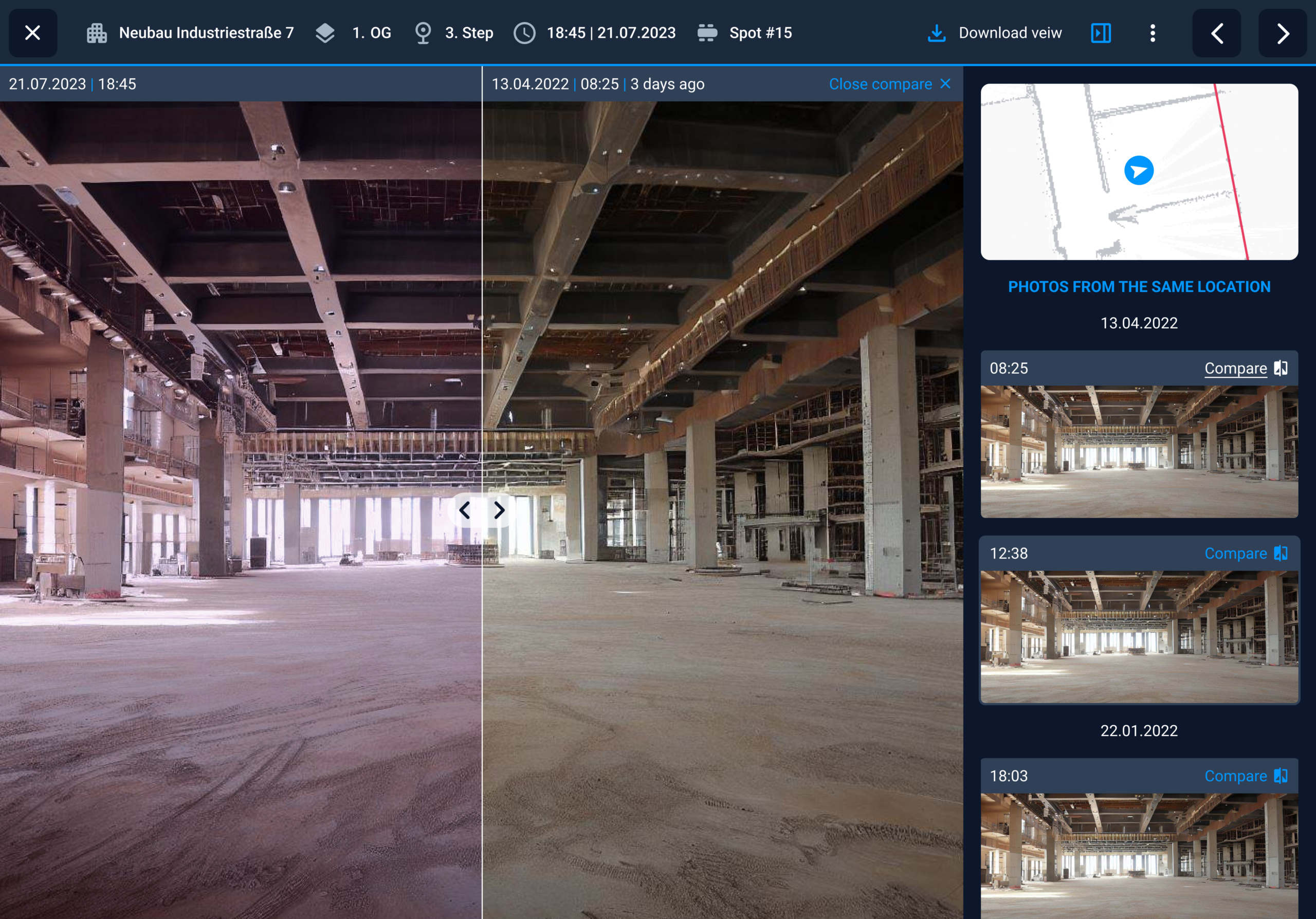Let me guess – you snap a photo of an issue on your jobsite and send it to your platform, and you do it again and again, day after day.
Using photos for construction site progress documentation is a smart move, but if you don’t have a good platform in place to capture and manage those photos, they can start to feel like more of a problem rather than a benefit. In this article we are going to reveal 5 reasons why robots will do the job better, MUCH better – now .
You probably know this buddy, but let us introduce him again. Boston Dynamics Spot – is a highly agile robot that is capable of walking complex terrains, climbing stairs, and reaching remote locations.
What is it for? What is the use?
- Progress monitoring (regular daily construction site inspection)
- Equipment Maintenance and Inspections
- Conflict Resolution (resolve disagreements related to workmanship, site conditions)
- Subcontractor Coordination/Material Tracking and Inventory Management
- Safety inspection/leaks detection, blocked emergency exits inspection
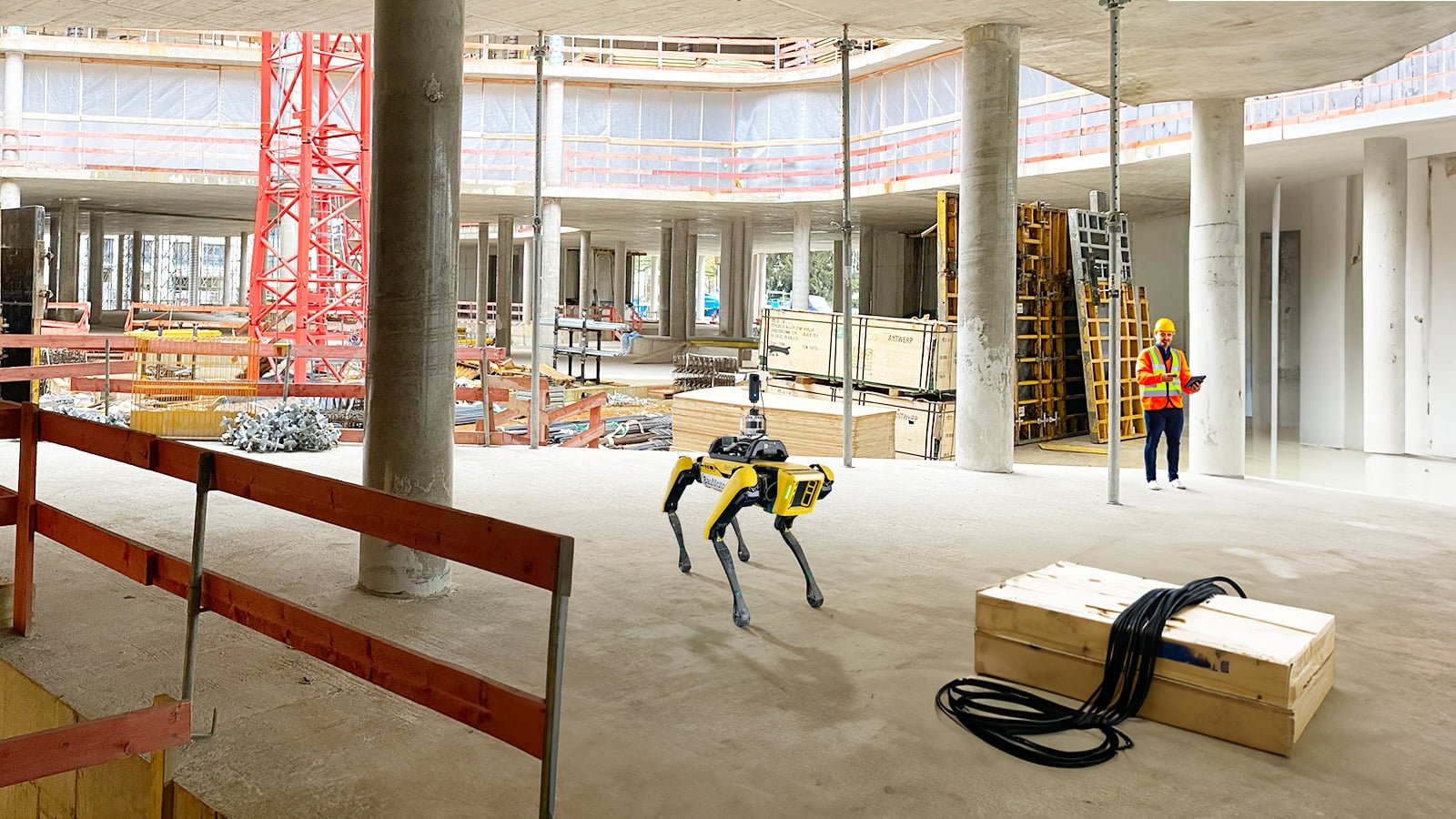
- Autonomous photo documentation through robots can greatly improve efficiency and accuracy. Robots can autonomously capture images at predetermined intervals or in response to triggers, eliminating the need for manual capturing. This streamlines the documentation workflow and ensures consistent and precise records of the construction site.
- The use of robots for photo documentation can lead to significant time and cost savings. Robots can work continuously without breaks, reducing the labor required for manual photo capturing. This allows construction companies to allocate their resources more efficiently, ultimately leading to cost reductions.
- Additionally, safety is a crucial consideration in the construction industry, and robots can contribute to enhanced safety on site. By deploying robots for photo documentation, companies can minimize the risk to human workers in hazardous or hard-to-reach areas. Robots can operate in adverse conditions, ensuring that vital documentation continues without compromising human safety.
- The comprehensive data collected through autonomous photo documentation provides valuable insights. This data can be used for project analysis, quality control, dispute resolution, and future reference. It enables better decision-making by offering stakeholders access to detailed visual information about the construction project.
- Furthermore, autonomous photo documentation facilitates improved communication and collaboration among various stakeholders. By easily sharing and collaborating on project visuals, including architects, engineers, clients, and subcontractors, teams can enhance coordination, reduce misunderstandings, and ensure better project outcomes.
Karelics construction site photo documentation includes features such as:
- Operators can define missions and change them as construction grows at any time.
- Running a robot every day helps create a daily picture of construction progress.
- Compare any photos made in a similar location to check what was done at any date. Or use it to find out when some problem has happened (a crack appeared, a window was broken).
- Letting a robot walk instead of a human saves time for more important tasks. Workers can check the photos as the robot walks or at any time later. No need to walk daily everywhere by himself
Karelics also provides a Robotic Fleet Management System which allows running autonomous construction site photo documentation with multiple robots, scaling and speeding up the process, and at the same time extending the flexibility – you can send another robot to a different place while first is going to a regular mission.
Let’s summarize – implementing autonomous construction site photo documentation using robots helps meet compliance requirements and establishes accountability. Timestamped and location-tagged images provide a reliable trail of evidence for project milestones, construction defects, and regulatory compliance.
Considering these potential advantages, construction companies may find it beneficial to explore the adoption of autonomous photo documentation using robots.

